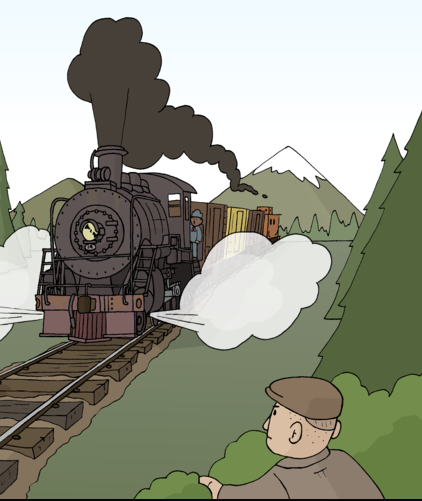FIND THE TIME TAKEN BY A TRAIN TO PASS A MAN
Subscribe to our ▶️ YouTube channel 🔴 for the latest videos, updates, and tips.
Time taken by a train of length l meters to pass a pole or standing man or signal post is equal to the time taken by the train to cover l meters.

The relationship between distance, speed and time.
Time = Distance / Speed
Speed = Distance / Time
Distance = Time ⋅ Speed
To convert minutes into hour, we should divide the given minutes by 60.
- If we want to convert the speed from km/hr to m/sec, we should multiply the speed by 5/18.
- If we want to convert the speed from m/sec to km/hr, we should multiply the speed by 18/5.
Example 1 :
A train 100 m long is running at the speed of 30 km/hr. Find the time taken by it to pass a man standing near the railway line.
Solution :
Length of the train = 100 m
Speed = 30 km/hr
To convert the speed from km/hr to m/sec, we multiply the speed by 5/18.
= 30 ⋅ (5/18)
= 5 ⋅ (5/3)
Required speed = (25/3) m/sec
Time taken by a train of length l meters to pass a pole or standing man or signal post is equal to the time taken by the train to cover l meters.
Time = distance / speed
= 100 / (25/3)
= 12 seconds.
So, the train of length 100 m is taking 12 seconds to cross a man standing near the railway line.
Example 2 :
In what time will a train 100 meters long cross an electric pole, if the speed be 144 km/hr.
Solution :
Length of the train = 100 meters
Speed of the train = 144 km/hr
Speed in m/sec = 144 ⋅ (5/18)
= 8 ⋅ 5
= 40 m/sec
Time = Distance / Speed
= 100/40
= 2.5 seconds
So, the train of length 100 m crosses an electric pole in 2.5 seconds.
Subscribe to our ▶️ YouTube channel 🔴 for the latest videos, updates, and tips.
Kindly mail your feedback to v4formath@gmail.com
We always appreciate your feedback.
About Us | Contact Us | Privacy Policy
©All rights reserved. onlinemath4all.com

Recent Articles
-
10 Hard SAT Math Questions (Part - 40)
Dec 25, 25 08:30 AM
10 Hard SAT Math Questions (Part - 40) -
10 Hard SAT Math Questions (Part - 41)
Dec 24, 25 07:58 PM
10 Hard SAT Math Questions (Part - 41) -
ASTC Formula in Trigonometry
Dec 23, 25 11:34 PM
ASTC Formula in Trigonometry - Concepts - Examples and Solved Problems


